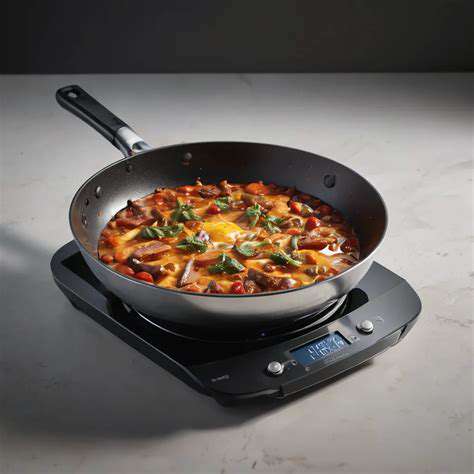Cooking with Electric Skillet: Versatile Cooking


Cleaning and Maintenance Tips for Long-Term Use
Keeping Your Electric Skillet in Top Shape
Maintaining your electric skillet properly is the key to ensuring it lasts for years. Food residue left unattended can create unpleasant smells and affect cooking performance. Over time, this buildup might even damage the heating elements. That's why giving your skillet a good clean after each use - or at minimum every few uses - makes such a difference. A well-cared-for cooking surface means better tasting food and a more reliable appliance.
When it comes to cleaning, methods vary depending on what you've cooked. Light meals might just need a quick wipe with a damp cloth right after cooking. For tougher jobs, soaking the pan in warm soapy water for a while helps loosen stubborn bits. Steer clear of harsh scrubbers or abrasive cleaners, as these can wear down any non-stick coating and potentially harm the heating components.
Safety first - always unplug the unit and let it cool completely before cleaning. This simple step prevents electrical accidents. Once cooled, remove any food debris, then wash with mild soap and a soft sponge. Rinse well and dry thoroughly before putting it away.
Extending Your Skillet's Lifespan
Regular maintenance goes beyond just cleaning. Take time to inspect the heating elements occasionally for signs of wear like discoloration. If you spot anything concerning, have it checked by a professional rather than ignoring potential issues that could lead to bigger problems down the road.
Storage matters more than you might think. Always make sure your skillet is completely dry before storing, and choose a clean, dry spot for it. Humid environments can encourage mold growth and damage coatings over time.
Don't overlook the power cord - check it periodically for damage like fraying or exposed wires. Replace immediately if you find any problems to avoid safety hazards. Also examine the skillet's exterior for cracks or chips that might affect performance.
One common mistake? Overloading the pan with too much food. This strains the heating elements and leads to uneven cooking. Stick to recommended capacities for best results.
Choosing the Right Electric Skillet for Your Needs
Key Considerations When Selecting a Skillet
Picking the perfect electric skillet depends on several important factors. First, think about how many people you're cooking for and how often you'll use it. Smaller models work well for individuals, while families will need larger capacity. The construction materials matter too - durable options like stainless steel or cast iron distribute heat evenly and stand up to frequent use.
Features can make a big difference in usability. Temperature controls, non-stick surfaces, and included accessories like lids all enhance the cooking experience. If counter space is limited or you need to move it often, prioritize portability and lighter weight models.
Understanding Different Skillet Types
Electric skillets come designed for specific cooking styles. Some specialize in high-heat frying, while others excel at delicate sautéing. The presence of removable components can increase versatility, and some models even function as mini ovens for certain recipes.
Material choices affect cooking performance - some conduct heat differently than others. Capacity determines how much you can cook at once. Deep fryer skillets create that crispy texture we love, while sauté models make tossing ingredients easier. Matching the skillet type to your cooking style ensures better results.
Safe Skillet Practices
Always review the manufacturer's safety guidelines before using any new appliance. Place your skillet on a stable surface to prevent accidents, and never walk away from it while it's on. Hot surfaces can cause burns, so use caution.
Proper maintenance protects both you and your appliance. Unplug before cleaning, avoid harsh chemicals, and inspect cords regularly. These simple habits prevent most common safety issues.
Cooking Tips and Recipe Ideas
The possibilities with an electric skillet are nearly endless - from fluffy pancakes to hearty casseroles. Learning to adjust heat and timing for different dishes helps achieve perfect results every time. Some helpful techniques include preheating properly and using the right temperature for desired textures.
Don't be afraid to experiment! Trying new ingredients and flavor combinations can lead to delicious discoveries. With practice, you'll develop the skills to create restaurant-quality meals right on your countertop.
- Storing Rice and Grains: Pantry Best Practices
- Pantry Organization Hacks: Declutter Your Kitchen
- Low Carb Dinners: Keto Friendly Options
- How to Choose the Freshest Seafood at Your Market
- Oven Baked Dinners: Less Mess, More Flavor
- Storing Root Vegetables: Keep Them Fresh Longer
- Vegetarian Dinner Party Ideas: Impress Your Guests
- Low Sugar Baked Goods for Healthy Snacking: Smart Choices
- Homemade Granola Bars: Healthy and Portable
- Baking Bread Machine Recipes: Effortless Baking
- Sustainable Grocery Shopping: Eco Friendly Choices
- Quick & Easy Egg Fried Rice: Weeknight Favorite